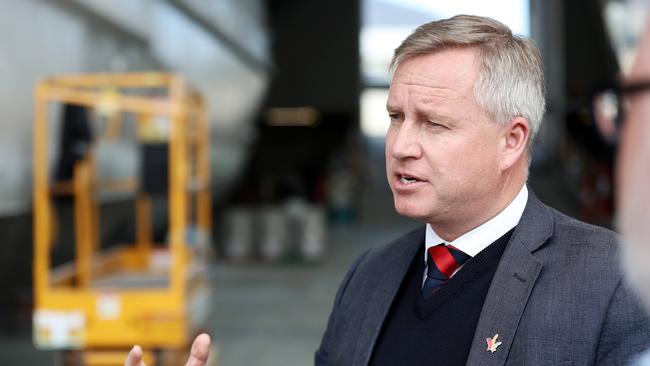Government, Opposition and industry reject tourism tax idea
Liberals, Labor and the tourism industry knock back calls for a visitor levy to help fund tourism infrastructure in the state. READ THE EDITORIAL

Politics
Don't miss out on the headlines from Politics. Followed categories will be added to My News.
CALLS for a visitor levy to help fund tourism infrastructure have been rejected by the State Government.
New Hobart Lord Mayor Anna Reynolds said a “small” visitor levy would help local councils fund infrastructure but Deputy Premier Jeremy Rockliff said it would not happen.
NEW LORD MAYOR TALKS UP TOURISM LEVY
“There will be no new taxes under the Hodgman Liberal Government, and that includes a tourism tax,” he said.
“We would not support a new tax on our key industries at all. I understand where the mayor is coming from, in terms of infrastructure, and we have record infrastructure [spending] when it comes to supporting our tourism industry.”
EDITORIAL: LEVY WORTH THINKING ABOUT
Opposition leader Rebecca White said Labor also did not support the idea.
“I can understand why local government is looking to find ways to increase their revenue to pay for the infrastructure that does support our local community as well as the visitor economy. However, I think a tourist tax is probably a step too far,” she said.
The idea was rejected out of hand by the peak body for the Tasmanian tourism industry.
But Greens leader Cassy O’Connor said there was growing unease at the view tourism numbers could grow indefinitely and a levy was a way of addressing that.
“This beautiful island is attracting more people from interstate and overseas,” Ms O’Connor said.
“We’re already, in the minds of many Tasmanians, at capacity and we need to see visitors going to our regions.
“We are strong supporters of a visitor levy for international visitors to Tasmania.”
Ms O’Connor said the Greens’ alternative budget had laid out the case for a visitor levy of 10 per cent on the cost of a bed for the night.
She said this could raise between $30 million and $40 million each year towards infrastructure and public services.
“We are missing a huge opportunity, first of all to try to secure revenue from the increase in visitation, but also to put some checks and balances in place here so we’re not chasing a continual growth model,” Ms O’Connor said.


